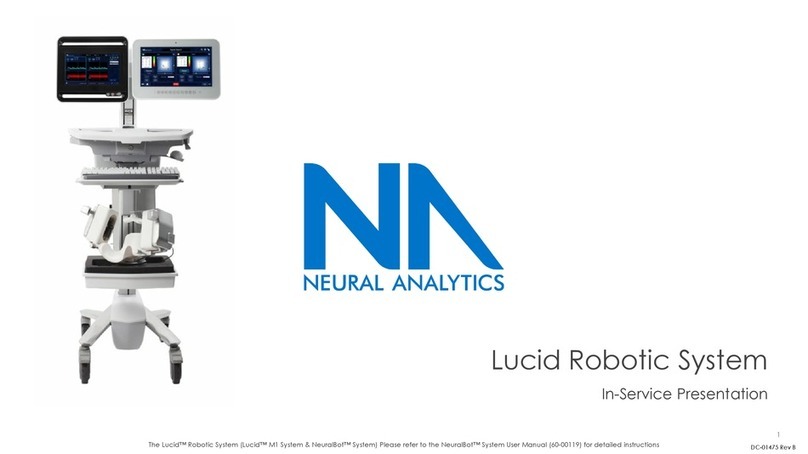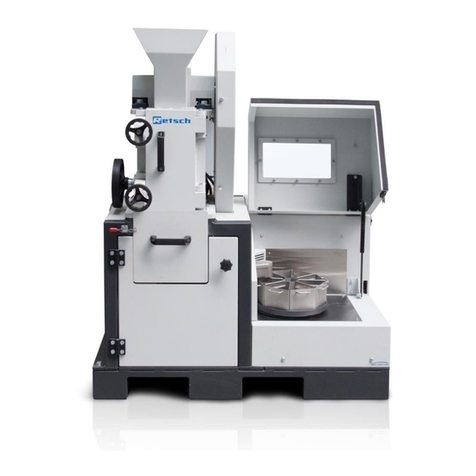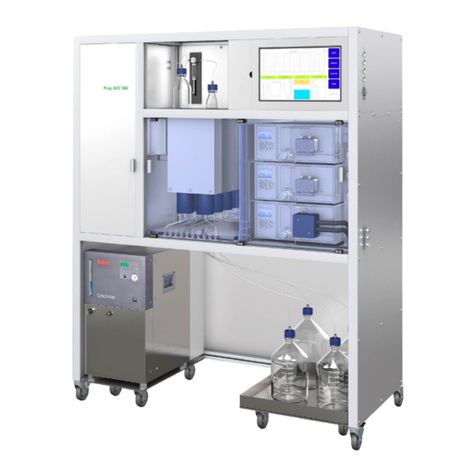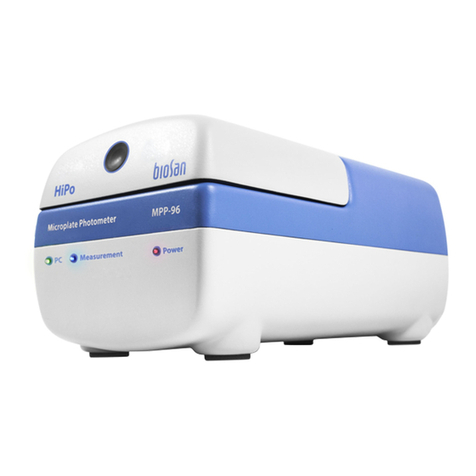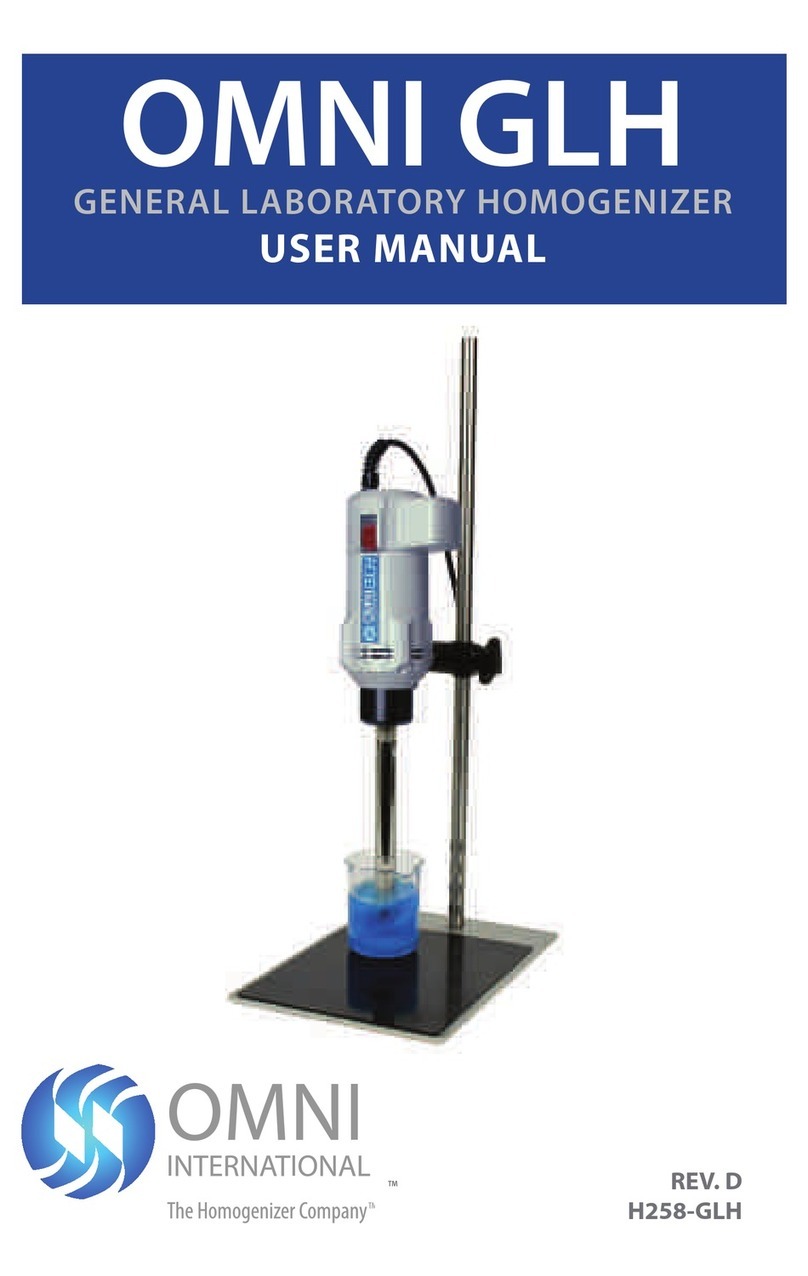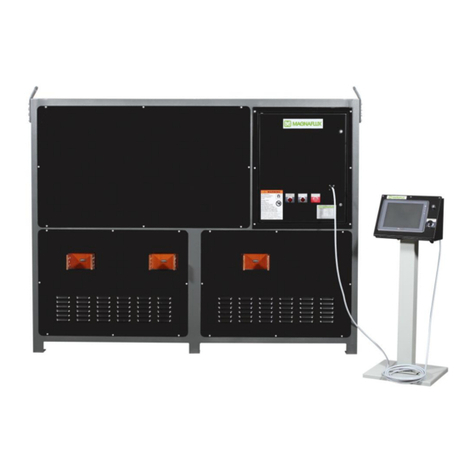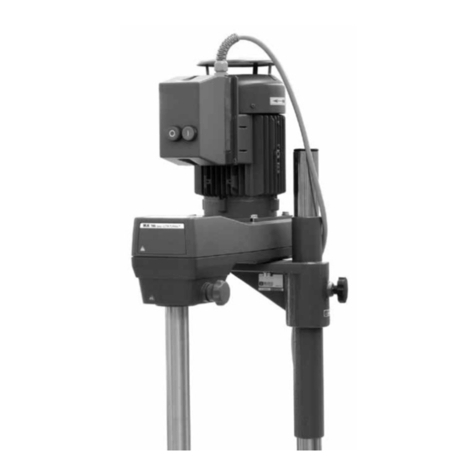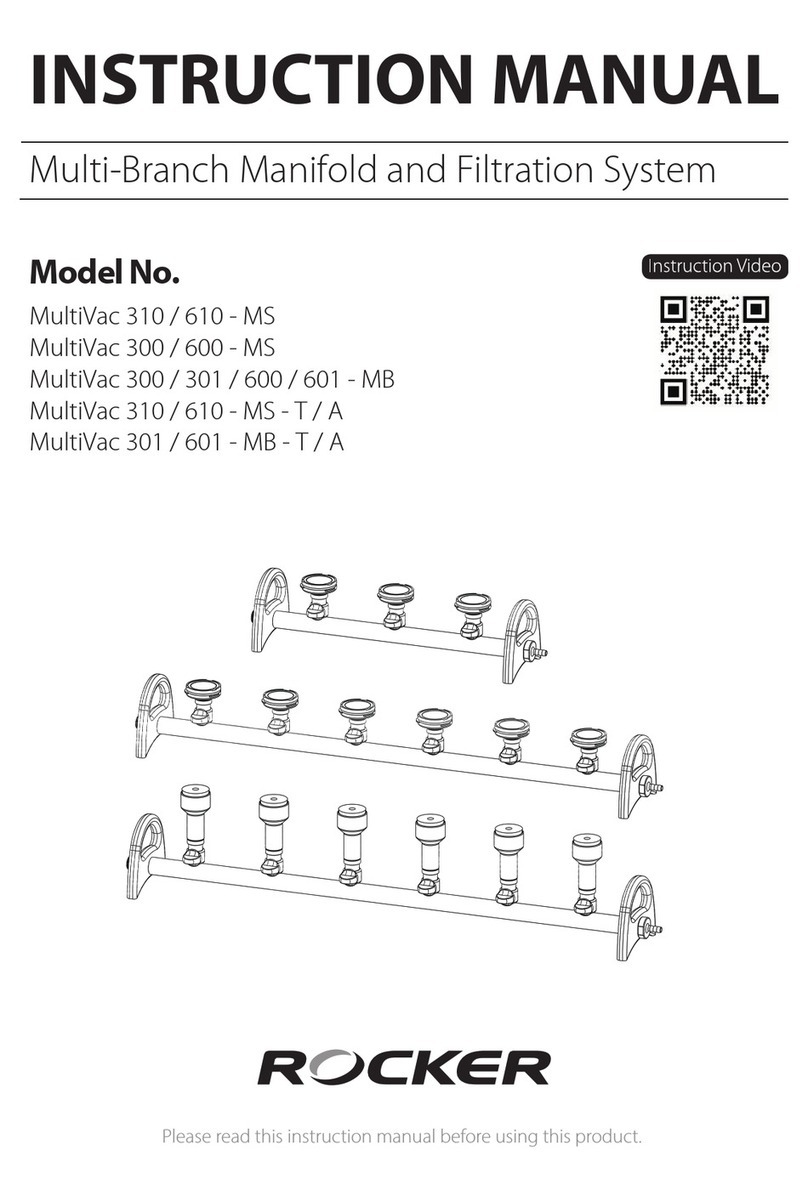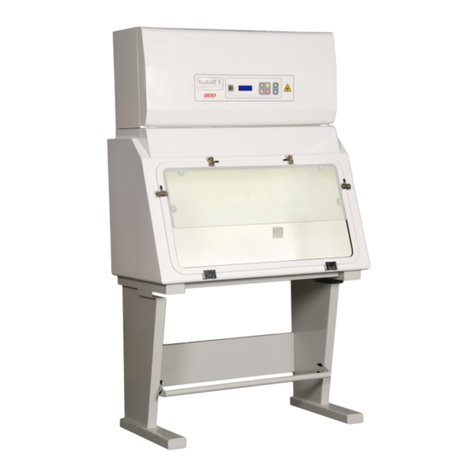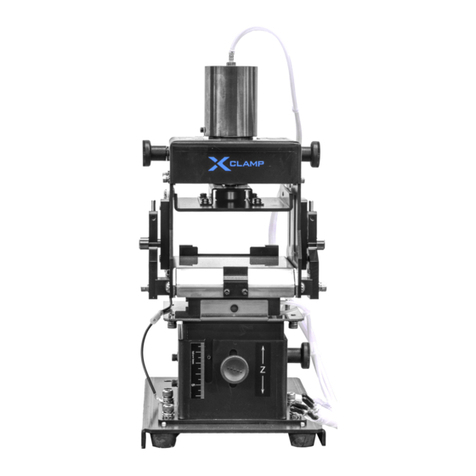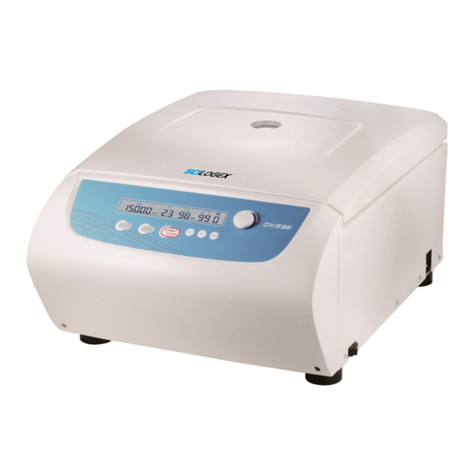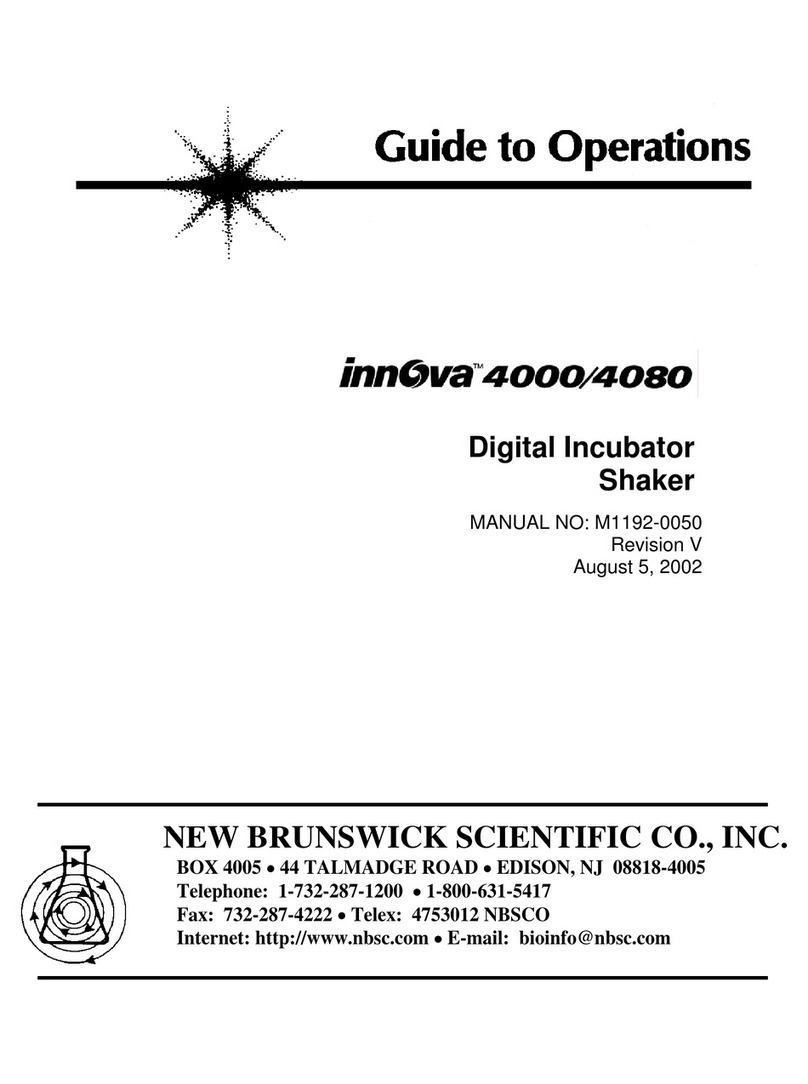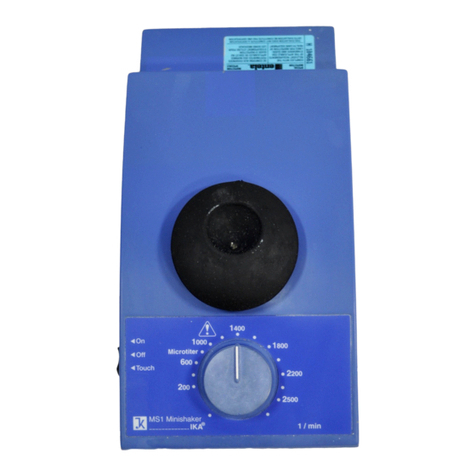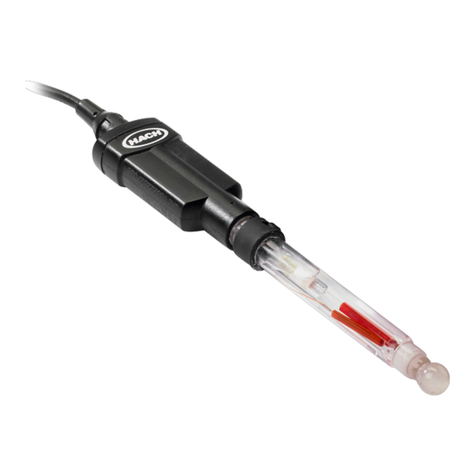B medical systems MT100 User manual

820 9506 71- ed0821
INSTRUCTIONS FOR USE
MT100
BLOOD REFRIGERATOR / INCUBATOR

2

3
This equipment is certified according to the safety standard IEC 61010-1.
Blood refrigerator/ Incubator in 100-130V / 220-240V 50/60Hz
and 13,7V / 27,4V DC, are Class IIa medical devices according
to the European Medical Device Regulation (EU) 2017/745 and
bear a CE0123 marking.
This equipment is designed to be safe at least under the following conditions (based on IEC 61010-1):
Indoor use; external use is only permitted under certain conditions•
Altitude up to 2000 m;•
Temperature -2°C to +43°C;•
Maximum relative humidity 80% for temperatures up to 31°C decreasing linearly to 50% relative•
humidity at 40°C.
Mains supply voltage fluctuations up to ±10% of the nominal voltage;•
Transient overvoltages up to the levels of overvoltage category II;•
Temporary overvoltages occurring on the mains supply;•
Pollution degree 2.•
The MT100 will be routine tested for grounding and dielectric strength according to Annex F of•
the above mentioned IEC 61010-1.

4
CONTENTS
page
1 Model Overview __________________________________________________________________________5
2 Important Information_____________________________________________________________________6
2.1 Warnings and Cautions _____________________________________________________________6
2.1.1 Warnings __________________________________________________________________7
2.1.2 Cautions _________________________________________________________________8
2.2 Labels and Symbols on the Packaging __________________________________________________9
2.3 Unpacking and Inspection ___________________________________________________________9
2.4 Intended use______________________________________________________________________10
2.4.1 Intended Purpose____________________________________________________________10
2.4.2 Intended Target Users ________________________________________________________10
2.4.3 Intended Use Environment ____________________________________________________10
2.4.4 Indications _________________________________________________________________10
2.4.5 Contraindications ____________________________________________________________11
3 Installation Procedure _____________________________________________________________________12
3.1 Location__________________________________________________________________________12
3.2 Castors __________________________________________________________________________13
3.3 Fixation __________________________________________________________________________13
3.4 Initial cleaning and disinfection _______________________________________________________13
3.5 Connection of remote alarm__________________________________________________________13
3.6 Electrical Connection________________________________________________________________14
3.6.1 AC Connection ______________________________________________________________14
3.6.2 DC Connection ______________________________________________________________14
4 Use and Operation _______________________________________________________________________15
4.1 Switching on/off ___________________________________________________________________15
4.2 Opening and closing ________________________________________________________________15
4.3 Important Advice for Storage _________________________________________________________16
5 Control Panel ___________________________________________________________________________17
5.1 Overview _________________________________________________________________________17
5.2 Main Switch_______________________________________________________________________17
5.3 Power Indicator____________________________________________________________________17
5.4 Mute Button during Powerfail-Alarm ___________________________________________________17
5.5 Electronic Control Unit ______________________________________________________________17
5.6 Temperature set-point key switch _____________________________________________________17
6 Alarms _________________________________________________________________________________18
6.1 Temperature Alarm _________________________________________________________________18
6.2 Powerfail Alarm ____________________________________________________________________18
6.3 Sensor Failure Alarm ______________________________________________________________18
7 Additional Equipment______________________________________________________________________19
7.1 Battery ___________________________________________________________________________19
7.2 Automatic Defrost _________________________________________________________________19
7.3 Inner fan _________________________________________________________________________19
7.4 Fuses ____________________________________________________________________________19
7.5 Remote Temperature Alarm __________________________________________________________19
7.6 Vehicle Battery Protection ___________________________________________________________20
7.7 Interior Equipment _________________________________________________________________20
8 Maintenance and Cleaning _________________________________________________________________21
8.1 Cleaning _________________________________________________________________________21
8.2 Maintenance ______________________________________________________________________21
9 Disposal ________________________________________________________________________________22
10 Troubleshooting _________________________________________________________________________22
11 Technical Data __________________________________________________________________________23
12 Spare parts ____________________________________________________________________________24
13 Wiring diagram _________________________________________________________________________27

5
1 Model Overview
Group Model name
Blood Refrigerator / Incubator MT100

6
A WARNING is a statement that alerts to the possibility of injury,
death or other serious adverse reactions associated with the use or
misuse of the device.
A CAUTION is a statement that alerts to the possibility of a problem
with the device associated with its use or misuse. Such problems
include device malfunction, device failure, damage to the device or
damage to other property.
WARNING
CAUTION
This mark is placed where electrical components are enclosed to prevent electric shock.
The cover should only be removed by a qualified engineer or a service personnel only.
This mark is placed where flammable components (refrigerants) are enclosed. Special
care has to be taken when working on these components.
This mark warns about low temperatures and freezing conditions inside the appliance.
2 Important Information
• Before using the MT100, read these operating instructions carefully, including all the information on
operation, safety, use and maintenance.
• B Medical Systems does not guarantee the safety of the stored products, if the appliance is used for any
purposes other than its intended use or if any procedures other than those mentioned in this operating
manual are used.
• Keep these operating instructions ready to be check and leave them with the unit, so that all users can be
informed on the functions and safety regulations.
• Contact our sales representative or agent for any problems related to these operating instructions.
• Any serious incident that has occurred in relation to the device should be reported to the manufacturer and
the competent authority of the Member State in which the user is established.
• These operating instructions may not be reproduced in any form without the written permission of our
company.
• Our company guarantees the product under certain warranty conditions. We shall in no way be responsible
for any loss or damage of content.
• The sound intensity level produced by the appliance is lower than 70 dBA (measured at a distance of1
meter).
2.1 Warnings and Cautions
• It is of utmost importance that any user complies with these operating instructions as they contain important
safety advice.
• Items and procedures are described so that this unit can be used correctly and safely. Following the advised
precautions will prevent possible injury to the user and any other person.
• Precautions are illustrated in the following way:

7
2.1.1 Warnings
• Do not use the device outdoors. Current leakage or electric shock may result if the unit is exposed to rain
water.
• Before cleaning or carrying out maintenance work, always switch the device off and disconnect the mains
plug. Working on the connected appliance may cause electric shock or fire.
• During defrosting, water will leak from the unit. Collect this water so that it does not lead to a risk of slipping
for passing persons.
• Make sure that no water penetrates the ventilation slots of the unit.
• Before cleaning or carrying out maintenance work, the contents preserved in it will have to be removed and
temporarily stored in another working refrigerator.
• Make sure the condensation water is removed on a weekly basis. Increased condensation water inside the
device may lead to malfunctioning of the device.
• Inspect the unit on a regular basis for damaged parts. Only genuine spare parts may be used. Use of any
other parts may affect the performance or cause physical injury or damage to the equipment.
• The power supply plug must be easily accessible.
• When disconnecting, always pull the plug and never the cable. Pulling the cord may result in electric shock
or fire by short circuit.
• These devices must only be used by adults. Do not allow children to play with it or touch the controls.
• Ensure that the unit is steady and perfectly straight and does not knock against anything next to it. If the
floor is not strong enough or the installation site is not adequate, this may result in injury from the unit
falling or tipping over.
• When transporting or moving the device, be aware of its weight.
• The unit is equipped with 4 wheels. Two of these wheels are equipped with brakes. Once it is in its final
position, the brakes of the front wheels must be locked to immobilise it and stop it from rolling away.
• Operate the device in a dry and well ventilated location, where it is protected against splashing water.
Protect the device and the cable against rain and moisture.
• Ensure that the connecting cable is not squeezed or bent when the unit is being installed or moved.
Deterioration of the insulation may cause current leakage or electric shock.
• Never install the device where acid or corrosive gases are present as current leakage or electric shock may
result due to corrosion.
•Only connect to a grounded socket. If the power supply outlet is not grounded, it will be necessary to have
a ground installed by qualified personnel.
• Before connecting, check whether the details on the nameplate correspond to local values. Use of a voltage
or frequency other than that on the nameplate may cause fire or electric shock.
• Do not store flammable or explosive substances inside these appliances (e.g. aerosols with
flammable propellant). These may cause explosion or fire.
• Make sure that no sharp or pointed objects come into contact with the cooling system. The
cooling system contains flammable refrigerant. Both the appliance and the products stored inside can be
severely damaged if this system starts to leak.
• Do not insert metal objects such as a pin or a wire into any vent, gap or any outlet. This may cause electric
shock or injury by accidental contact with moving parts.
• Do not place the device near naked flames or other heat sources (heaters, direct sunlight, gas ovens etc.)
• Disconnect the power supply prior to any repair or maintenance in order to prevent electric shock or injury.
• Do not touch any electrical parts (such as power supply plug) or operate switches with a wet hand. This
may cause electric shock.
• All servicing and repairs must be carried out by a qualified customer service engineer. Work performed by
persons with insufficient technical knowledge may adversely affect the performance or cause physical injury
or damage to the equipment.
• Make sure the ventilation openings are never blocked.
• Make sure that the loading does not touch the reference bottle of the display sensor.
• Make sure the door is securely closed.
• Note that the unit may be locked using a key. Always ensure that the key is available to the user.
• Before scrapping an old unit, remove the door so that children cannot lock themselves inside while playing.
• Before scrapping the unit, remove the lead accumulator and dispose of it separately.
• When disposing of the unit, make sure that it does not get too hot, as combustible gas would cause the
insulating foam to froth up.
• Before disposing of the appliance, the refrigeration circuit should be opened outside so that the refrigerant
can escape. Attention: The refrigerant is flammable!
• Make your contribution to saving the environment. Bear in mind that orderly and proper disposal isrequired.
Packaging materials and devices are always recyclable and should be taken for recycling.

8
• Not activating the breaks, may cause the unit to roll away and cause damage to the unit and physical injury.
• Not securing the device with the appropriate belt system, may cause damage to the unit during transit and
physical injury.
• The device can be run on DC with a battery charger connected to the battery. However, it should never be
run directly from a battery charger. This will damage the compressor and void the warranty.
• Makse sure the adequate temperature setpoint is selected for the stored Product
2.1.2 Cautions
• Ensure that there is sufficient room around the device for air circulation. Please refer to the installation
information regarding this point.
• Do not locate the device below a ceiling fan or right next to air-conditioning equipment.
• The sound intensity level produced by the appliance is lower than 70 dBA (measured at a distance of 1
meter).
• Check whether the device has been delivered undamaged. If you find that damage has occurred in transit,
immediately contact the delivery service or relevant sales outlet, submitting the delivery note or proof of
purchase.
• Do not operate a device that has been damaged in transit! If you are unsure, contact your sales outlet and
ask them.
• Follow the instructions for transport and storage of the product marked on the packaging.
• The device must be transported in an upright position only (maximum inclination 30°).
• Document any change of configuration and report it to Technical Support.
• All connected devices/signal equipment must be providing reinforced or double insulation for protection
against electric shock.
• Upon the occurrence of an alarm situation, attempts must be made to discover the reason for the alarm and
resolve it as quickly as possible. If that is not successful the necessary measures must immediately be taken
so that the stored goods are not damaged.
• Optimal function of the appliance is given at an ambient temperature and maximum relative humidity
indicated in the technical data, (see chapter 11).
• The device must be set up in a dry well-ventilated place. Avoid direct sunlight or locating it close to a heat
source. The location must be proctected against rain and dust.
• This device cannot be used/is not for use in facilities at altitudes of 2000m or higher.
• The use of hydrogen peroxide H2O2 (VHP) for the disinfection (sterilization) of the appliances is not suitable.
This procedure may be applied exclusively with dedicated appliances.
• Other than the cleaning procedure described in this manual, follow the internal policy and procedures.
• Before using the refrigerator it should be cleaned inside and outside.
• For cleaning, use only gentle cleaning agents. Never use aggressive or caustic cleaning agents, scouring
powder, steel wool, abrasive sponges or chemical solvents. When cleaning, make sure that no fluids of any
kind run into the ventilation housing.
• For disinfecting, we recommend all the surface disinfecting agents commonly used by the customer,
provided they are recommended by the national organizations. For disinfecting small areas, we recommend
using a concentrated alcoholic agent.
• Before being loaded, the unit must have reached the set point temperature.
• The load should only be stored in the provided baskets and should not exceed the storage areas. Do not
overload the device.
• Different blood or plasma types should be sorted and stored in a manner for the User to identify these with
ease.
• The loading must never obstruct the air-inlet-openings.
• Do not store warm items in the devices. They are not designed for fast cooling of warm items.
• Avoid long and / or frequent door openings to prevent that the inner temperature rises to high.
• Make sure that the door is correctly closed securely.

9
2.2 Labels and Symbols on the Packaging
• Follow the instructions for transport and storage of the product marked on the packaging:
2.3 Unpacking and Inspection
CAUTION
• Check whether the device has been delivered undamaged. If you find that damage has occurred in transit,
immediately contact the delivery service or relevant sales outlet, submitting the delivery note or proof of
purchase. Do not operate a device that has been damaged in transit! If you are unsure, contact your sales
outlet and ask them.
• Do not operate a device that has been damaged in transit! If you are unsure, contact your sales outlet and
ask them.
• The device must be transported in an upright position only (maximum allowable inclination 30°).
• During transport in a vehicle, the equipment must be secured with an appropriate belt system. The
respective belts must fulfill the requirements of the EN standard 12195-2. Each single belt must be able to
transmit a traction power of at least 1500 daN.
• The device is equipped with 4 wheels. 2 of these wheels are equipped with brakes. Once it is in its final
position, the brakes of the front wheels must be locked to immobilise it and stop it rolling away.
• Packaging materials and devices are always recyclable and should be taken for recycling.

10
2.4 Intended use
2.4.1 Intended Purpose
Blood refrigerator/incubators are devices intended to be used in the blood transfusion medicine for the
support on the diagnosis, prevention and treatment of diseases or injuries by keeping whole blood or blood
components at a protective and stable temperature between 2°C to 6°C, or platelet components between
20°C to 24°C, until they are ready for use. They are electrically-powered devices and include an active
system to regulate the temperature, handles and/or wheels for transportation, and alarms which signal
unintentional changes in temperature and power failures.
2.4.2 Intended Target Users
Pharmacists, doctors, laboratory staff or other staff that are trained and/or experienced in dealing with
whole blood and blood components.
Blood refrigerator/incubators must be operated by individuals in organizations that have the knowledge of
the relevant FDA, AABB, EU or any other applicable regulations on storage and distribution of blood and
blood components, as well as platelet components. The organization must implement and validate
procedures for the storage and distribution of blood and blood components, as well as platelet components,
according to these regulations, including the necessary storage temperature and the suitable storage period.
Service technicians with a recognized license or certificate as required by local authorities for installation,
servicing and repair of refrigeration systems and equipment, and properly trained on the blood
refrigerator/incubators.
Patients do not come into direct contact with the devices.
2.4.3 Intended Use Environment
Blood refrigerator/incubators are intended to operate indoors in hospitals, blood donation services, blood
transfusion centers and clinical laboratories, or outdoors during transport inside vehicles.
The devices are designed for an ambient temperature range from -2°C to +43°C under operation, and from
-30°C to +70°C during transport and storage. The ambient humidity range during transport and storage lies
between 5% and 95%, and up to 75% under operation.
2.4.4 Indications
Blood refrigerator/incubators are intended for the safe transport and storage of whole blood and blood
components, as well as platelet components, used in the clinical medicine for diagnosis, prevention and
treatment of diseases or injuries. The transport and/or storage duration of platelet components must not
exceed 24 hours.
Whole blood, red cells, and other blood components intended to be used for transfusion, like leucocyte-
depleted whole blood and red cells, must be kept at a controlled temperature between 2°C and 6°C during
storage and can be stored for a period of time of up to 35 days, depending on the anticoagulant/preservative
solution used.
Long storage of whole blood and blood components above 6°C increases the risk of bacterial contamination
(septicemia), which may progress to septic shock. Septic shock has a death rate as high as 50%, depending
on the type of organism involved, and therefore requires urgent medical intervention.
The storage of blood and blood components below 2°C increases the risk of rupture of the red cells
(haemolysis).
During a maximum transit time of 24 hours, the temperature of whole blood or other blood components
must at no time exceed +10°C. Temperature excursions above +10°C increases the risk of sepsis due to
bacterial contamination.

11
Blood components intended for intrauterine and exchanged transfusion (e.g. IUT, ET, PR/ET) must be stored
between 2°C and 6°C for no longer than five days prior to use. After concentration and irradiation, the
storage time must be no longer than 24 hours.
If transported or stored without agitation, platelet components must be kept at a controlled temperature
between 20°C and 24°C for a maximum period of 24 hours before use. Under constant agitation platelet
components can be stored up to 5 days.
The impact of transport conditions on the quality of platelet components should be validated by appropriate
quality control tests.
When stored at temperatures below 20°C, platelet components undergo membrane phase transition with
the original discoid structure being converted to a sphere. Storage at temperatures higher than 24°C
increases the risk of bacterial contamination.
2.4.5 Contraindications
The devices are not intended to be used for quick cooling of blood or platelet components.
The devices are not intended to be used for storage of platelet components for a period longer than 24
hours.
The devices are not intended to be used for the cooling of foodstuffs or any other products not covered in
the intended use.
The devices are not intended to be operated outside the environmental and installation conditions
documented in the operating instructions.

12
3 Installation Procedure
WARNING
• All installation work and adjustments to the device must be carried out by qualified personnel. Work
performed by persons with insufficient technical knowledge may adversely affect the performance or cause
physical injury or damage to the equipment.
• Ensure that the connecting cable is not squeezed or bent when the unit is being installed or moved.
Deterioration of the insulation may cause current leakage or electric shock.
• When transporting or moving the device, be aware of its weight.
3.1 Location
• The following section provides information on how to install and place the device in your location.
WARNING
• Do not use the device outdoors unless the unit is operated in covered places; an external use is only
permitted if the unit is safely protected from rain and dust. Current leakage or electric shock may result if
the unit is exposed to rain water.
• Ensure that the device is steady and perfectly straight and does not knock against anything next to it. If the
floor is not strong enough or the installation site is not adequate, this may result in injury from the unit
falling or tipping over.
• Never install the device where acid or corrosive gases are present as current leakage or electric shock may
result due to corrosion.
• The power supply plug must be easily accessible
• Make sure the ventilation openings are never blocked.
• When the unit is in its final position it is important to immobilise the unit using the brakes.
CAUTION
• Optimal function of the device is given at an ambient temperature and maximum relative humitdity indicated
in the technical data (see chapter 11).
• Ensure that there is sufficient room around the unit for air circulation.
• The device must be set up in a dry well-ventilated place. Avoid direct sunlight or locating it close to a heat
source.
• Do not locate the unit below a ceiling fan or right next to air-conditioning equipment.
• This device cannot be used/is not for use in facilities at altitudes of 2000m or higher.

13
3.2 Castors
• The device is equipped with 4 wheels. Two of these wheels are equipped with brakes. Once it is in its final
position, the brakes of the front wheels must be locked to immobilise it and stop it from rolling away .
3.3 Fixation
• During transport in a vehicle, the equipment must be secured with an appropriate belt system (the device
is standardly delivered with an adequate belt system). If other belts are used, they must fulfill the
requirements of the EN standard 12195-2. Each single belt must be able to transmit a traction power of at
least 1500 daN .
WARNING
• Not activating the breaks, may cause the unit to roll away and cause damage to the unit and physical injury.
• Not securing the device with the appropriate belt system, may cause damage to the unit during transit and
physical injury.
3.4 Initial cleaning and disinfection
CAUTION
• The use of hydrogen peroxide H2O2 (VHP) for the disinfection (sterilization) of the device is not suitable.
• Before using the device, it should be cleaned inside and outside.
• For cleaning, use only gentle cleaning agents. Never use aggressive or caustic cleaning agents, scouring
powder, steel wool, abrasive sponges or chemical solvents.
• For disinfecting, we recommend all the surface disinfecting agents commonly used by the customer,
provided they are recommended by the national organizations. For disinfecting small areas, we recommend
using a concentrated alcoholic agent.
• Other than the cleaning procedures described in this manual, follow the internal policy and procedures on
cleaning, disinfection and maintenance established by your facility.
• Refer to section 8 for more information on cleaning.
3.5 Connection of remote alarm
• Connect the remote alarm located on the back of the unit to your surveillance system by respecting the
connecting diagram in section 6.7.

14
3.6 Electrical Connection
WARNING
• Only connect to a grounded socket. If the power supply outlet is not grounded, it will be necessary to have
a ground installed by qualified personnel.
• Before connecting, check whether the details on the nameplate in the interior correspond to local values.
Use of any other voltage or frequency other than that on the nameplate may cause fire or electric shock.
• Disconnect the device from the power supply prior to any repair or maintenance in order to prevent electric
shock or injury.
• Do not touch any electrical parts (such as power supply plug) or operate switches with a wet hand. This
may cause electric shock.
• When disconnecting, always pull the plug and never the cable. Pulling the cord may result in electric shock
or fire by short circuit.
CAUTION
• Before connecting and switching on the device for the first time, allow it to stand for 30 minutes.
• To prevent problems with other electrical equipment causing malfunction, the device should be connected
to a separate circuit. Never connect it to a single socket with other electrical equipment by means of a multi-
socket.
• Make sure that the plug is easily accessible so that if needed it can be easily be disconnected without having
to move other equipment or furniture.
• All connected devices/signaling equipment must provide reinforced or double insulation for protection
against electric shock.
• The device can either be operated on DC (Operation Voltage : 13.7V or 27.4V) and / or on AC (100-130V /
220-240V; 50/60 Hz) power supplies.
• The connections for both AC / DC are located on the rear of the appliance.
• In circumstances, where AC and DC are available, both plugs can be connected to the supplies at the same
time. The controller will automatically switch to AC when it is available and change over to DC in the event
the AC supply fails or is switched off.
• The use of an extension cord is not recommended.
3.6.1 AC Connection
• The AC cable is removable. First connect one end of the cable to the socket at the back of the unit, then
connect the other side of the plug to a standard approved AC socket.
3.6.2 DC Connection
• The device can be operated on 13.7 or 27.4 V DC voltage.
• The device is supplied with a plug system that should preferably be used for the DC connection. If another
type of plug system is used, this system must be able to supply a minimum of 10 amps at 12V or 8 amps
at 24V for a longer period. The assembly and the connection of the plug system must only be done by a
certified electrical specialist.
• In order to minimize voltage loss keep the cable diameters as large as possible and the cable lenghts as
small as possible.
• When connected to the battery in a vehicle, the DC connection must be secured by 15 amps fuse.
WARNING
• The device can be run on DC with a battery charger connected to the battery. However, it should never be
run directly from a battery charger. This will damage the compressor and void the warranty.
• The DC voltage supply of the device must be provided by a SELV voltage source.

15
4 Use and Operation
WARNING
• The device must only be used by adults. Do not allow children to play with it or touch the controls.
• Do not store flammable or explosive substances inside these appliances (e.g. aerosols with flammable
propellant). These may cause explosion or fire.
• Make sure that no sharp or pointed objects come into contact with the cooling system. The cooling system
contains flammable refrigerant. Both the appliance and the products stored inside can be severely damaged
if this system starts to leak.
• Do not insert metal objects such as a pin or a wire into any vent, gap or any outlet. This may cause electric
shock or injury by accidental contact with moving parts.
• Makse sure the adequate temperature setpoint is selected for the stored Product.
• Make sure that the door is securely closed.
• Note that the unit may be locked using a key. Always ensure that the key is available to the user.
CAUTION
• The sound intensity level of the unit is lower than 70dBA (Measured at a distance of 1 meter).
4.1 Switching on/off
• To switch on press the main switch to be in position “I”. The green Power indicatior will light up.
• To switch off the unit, press the main switch to be in position “O”:
4.2 Opening and closing
• The unit comes with a one-handed door opening mechanism and key lock system.
• To open the unit, pull the door handle and the door will spring open (image 1).
• To close the unit, push the door against the unit and close the door handle.
• Once the unit has been securely closed, the user may lock the unit using a common key lock system
(image 2).
image 2:Key lock
image 1: Open unit

16
4.3 Important Advice for Storage
CAUTION
• Before being loaded, the device must have reached the temperature set-point.
• The loading should only be stored in the provided baskets and should not exceed the the storage areas. The
total amount of stored blood bags should be evenly distributed in the 4 baskets (max. 12 blood bags per
basket) (image 4). Do not overload the unit.
• Different blood or platelet types should be sorted and stored in a mannner for the user to identify these with
ease.
• The loading must never obstruct the air-inlet-openings of the cabinet.
• Make sure that the stored load does not tilt to the backside.
• Do not store warm items in the devices. They are not designed for fast cooling of warm items.
• Avoid long and / or frequent door openings to prevent that the inner temperature rises to high.
• Make sure that the door is closed securely and that the door gasket seals adequately against the
cabinet.
• The unit is designed as storage for blood bags and platelets. It is not designed for cooling down the stored
product.
• The maximum storage capacity of the MT100 is 21,5L of blood (48 blood bags of 500ml filled with 450ml
each).
• Store the blood bags in an upright positions (image 3).
image 3: Upright position of blood bags image 4: Max. storagecapacity

17
5.2 Main Switch
• Switch on the unit by turning the switch to the “I”- position.
5.3 Power Indicator
• When switched on, the green power indicator lamp lights up to show that there is power available.
• In Powerfail-mode, the colour changes to red (see chapter “Powerfail-Alarm”)
5.4 Mute Button during Powerfail-Alarm
• In case of power failure (while unit is being operated), a visual and an acoustic alarm is generated. The
buzzer can be muted by pressing the mute button (see chapter “Powerfail-Alarm”).
5.5 Electronic Control Unit
• The electronic control unit controls and regulates the temperature set-point of the unit.
• During standard conditions the electronic control unit displays the interior temperature of the device in °C.
• Additionaly to this standard view, the electronic control unit can also illustrate different symbols :
compressor is running (cooling mode)
inner fan is running
heater is running (heating mode)
unit is running in 22°C temperature set-point mode
temperature alarm
Defrost cycle is running
• For safety reasons all parameters on the electronic control unit are blocked and cannot be changed.
5.6 Temperature set-point key switch
• Turn the switch to the desired temperature :
+4°C for storage and transport of red cells
+22°C for storage and transport of platelets.
• To avoid any errors during operation, remove the key after choosing the right temperature set-point.
AUX
22ßC
4ßC
Power
0
I
Electronic
Control Unit
Main Switch
Temperature
set-point key switch
Power Indicator
Mute Button
for Powerfail-Alarm
5 Control Panel
5.1 Overview

18
6 Alarms
CAUTION
• Upon the occurrence of an alarm situation, attempts must be made to discover the reason for the alarm and
resolve it as quickly as possible. If that is not successful the necessary measures must immediately be taken
to avoid damaging the stored goods.
6.1 Temperature Alarm
• As soon as the alarm temperature values (max or min) are exceeded, the instrument generates a visual and
an acoustic alarm.
• Visual alarm : the alarm-symbol lights up and the display shows the actual temperature together with
the respective alarm label : “HA” for high alarm or “LA” for low alarm. The display returns to the normal
temperature display mode, as soon as the alarm situation has been resolved.
• The acoustic alarm signal can be muted for a predefined time (20 minutes) by pressing one of the buttons
on the electronic control unit. If the alarm situation is still present after the predefined time, the buzzer will
restart. The mute button for powerfail alarm on the control panel has no function in case of a temperature
alarm.
• The following temperature values are predefined for the temperature alarms:
in 4°C - mode : High Alarm : 6°C Low Alarm : 2°C
in 22°C - mode : High Alarm : 24°C Low Alarm : 20°C
• After initial switch-on and after every change of the temperature set-point, the temperature alarm function
is disabled for 3 hours.
6.2 Powerfail Alarm
• In case of a power failure (while the unit is being operated), a visual and an acoustic alarm is generated:
visual : the Power-LED turns from green to red.
acoustic : the buzzer starts.
• The buzzer can be silenced by pressing the mute button for powerfail alarm. The buzzer is deactivated until
the powerfail situation has been resolved.
6.3 Sensor Failure Alarm
• The device is equipped with 3 temperature sensors.
• An alarm is generated in case of failure/error of a sensor:
• Error message “P1” : Regulation sensor failure. The display alternates between the error message “P1”
and the indication of the display sensor temperature. In case of regulation sensor failure, the unit is
regulated by a pre-programmed ON-OFF-compressor cycle.
Important: This regulation cycle is designed for the 4°C temperature set-point operation only.
• Error message “P2” : Display sensor failure. When the error message “P2” is displayed, the regulation
of the appliance is maintained, but no temperature alarm signal is generated.
• Error message “P4” : Evaporator sensor failure. The display alternates between the error message “P4”
and the display sensor temperature. The evaporator sensor controls the automatic defrosting process. In
case of evaporator sensor failure, the defrosting of the unit is completed on a pre-programmed time basis
(see chapter “Automatic Defrosting”)
• Together with the visual display of the error message, an acoustic alarm is generated. The buzzer can be
muted for a predefined time of 20 minutes by pressing any button on the electronic control unit. If the alarm
situation has not been resolved after this predefined time, the buzzer starts again. The mute button for
powerfail alarm on the control panel has no function in case of a sensor failure alarm.

19
7 Additional Equipment
7.1 Battery
• The alarm functions described in chapter 5, are supplied by a 12V battery situated in the compressor
compartment.
• This battery is recharged automatically, when the unit is connected to a power source.
• The battery should be replaced every 2 years as a precaution. The battery replacement should only be
carried out by an authorized service engineer. The load must be removed and the unit must be switched off
before the battery is replaced.
• The rechargeable battery is a lead accumulator which, if defective, must be disposed of separately.
7.2 Automatic Defrost
• The MT100 is equipped with an automatic defrost function. After a run time of 8 hours, the compressor is
switched off until the evaporator temperature reaches +4°C. If this temperature is not achieved after a
timeout of 20 minutes, the appliance is switched on again.
• During the automatic defrost, the defrosting symbol is shown in the display.
7.3 Inner fan
• The device is equipped with an internal ventilation system and it is vital that the interior fan is always
operational.
• To prevent warm outside air being sucked into the unit unnecessarily during a door opening, the fan
switches off automatically, while the door is opened.
• The airflow to the fan must never be impeded. The ventilation slots must therefore never be blocked or
covered.
7.4 Fuses
• In both operation modes, DC and AC, the equipment is
protected by fuses, which can be located at the back of
the compressor compartment.
• In case of a defect, the fuses may only be replaced by
an identical part.
7.5 Remote Temperature Alarm
• There are 3 potential free contacts on the back of the
unit that can be used to trigger an additional
remotetemperature alarm (visual or audible).
• Muting the buzzer in a temperature alarm situation only
switches off the internal audible alarm. The key does
not interfere with the external alarm. The external alarm
signal is only switched off once the cause of the alarm
has been eliminated.
• A max Voltage of 30V AC or 60V DC can be connected
to the contacts. The maximum load must not exceed 8A.
The minimum power rating is 500mA / 12V AC.
3.15 A
15 A
AC-fuse
(3.15 A)
DC-fuse
(15 A)
Remote Alarm
Connection
Resting State Alarm

20
7.6 Vehicle Battery Protection
• In DC-operating mode, the MT100 is equipped with a voltage management system. In order to ensure that
the vehicle battery is not completely unloaded and it can be started without problems, the MT100 is
switched off.
• The battery protection system will turn the compressor off once the supply voltage drops below a predefined
cut-off value. The compressor restarts once the battery has recovered to above the cut-off value, once the
vehicle is restarted.
• If the device is automatically switched off due to the vehicles low battery, the system generates a powerfail-
alarm (see chapter “Powerfail Alarm” for more details).
7.7 Interior Equipment
• The device is designed to have optimal function with the original baskets. If interior fittings from other
suppliers are to be used, this must be agreed with the manufacturer.
• In case the user decides to change the original fittings without prior authorization from B Medical Systems,
please assure that the air circulation inside the chamber is guaranteed in empty and loaded conditions.
Restriction of the air circulation may cause the unit not to fulfill its intended use. It is recommended that
the user validate the device with the changed configuration before operation.
Table of contents
